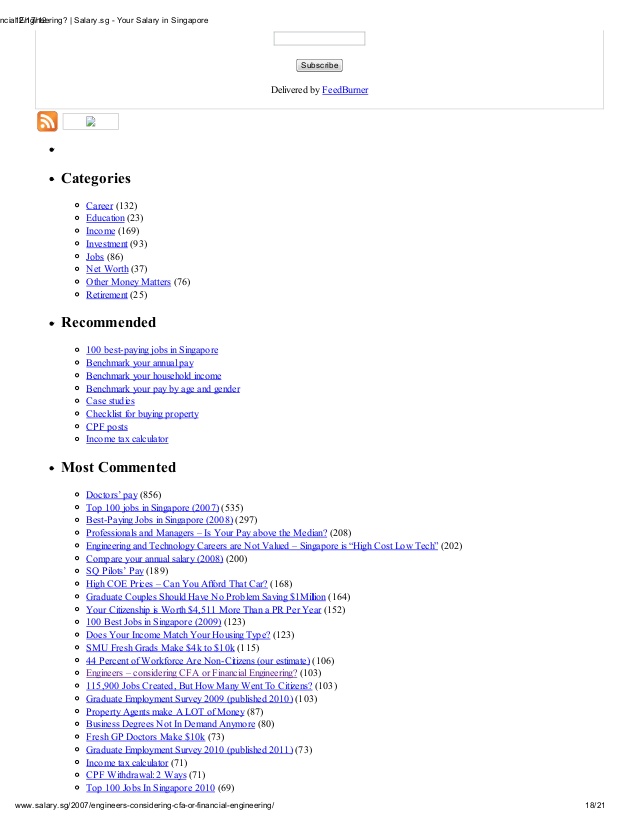pe-ratio,Price-to-Earnings Ratio Definition, Understanding, and Why pe-ratio,Price-to-Earnings Ratio is Important?
Contents
It provides indication whether a stock at its current market price is expensive or cheap. Let us explore what is PE ratio, its different types and how to use them in investment decisions. It helps them decide whether there is an overvaluation or undervaluation of an organization’s stock against its earnings.
We have provided the meanings of almost all the financial terms along with the context in which they can be used. If you have lingering doubts on any financial term, then all you must do is log on to our website and check out the Financial Dictionary.
Likewise, if business ventures decide to treat significant regular expenses as an unusual expense, it would directly boost the earnings per share artificially. There are several variations of EPS, and each of them tends to signify a different aspect of this financial parameter. It is because, based on the use of EPS, a company’s stock appears to be undervalued or overvalued.
Dow Futures Decline, Investors Look Ahead to CPI
Acronyms are combinations of letters that have different meanings. Two acronyms are mentioned and detailed above TTM and TTT, which stands for Talk To Me and To The Top. These are used to prevent writing full sentences and instead, users use acronyms. Lots and lots of fans like sending photos and cards via the mail for their favorite players to sign and revert back. TTM databases help the fans know which players are most likely to sign and send back autographed materials.
Mojo Call is derived using 4 dots together – Quality, Valuation, Financial Trend and Technical. However, even if a company has 3 positive parameters, the company can still be rated a Buy or Strong-Buy with an expensive valuation. We curate news periodically from across multiple news agencies and present the headlines. To read the articles you will be redirected to the news site. For instance, trend in quarterly revenues would incorporate the growth rate, the trajectory of growth, consistency of growth etc.
Pay 20% upfront margin of the transaction value to trade in cash market segment. A TTM is like a congested, financial snapshot of a company. It’s a great method for managers and supervisors to keep https://1investing.in/ tabs on how things are running. Is quite excited in particular about touring Durham Castle and Cathedral. Get live Share Market updates and latest India News and business news on Financial Express.
Thorough research is to be done about a company or a sector before taking up a significant investment decision. Interpretation of the PE ratio depends upon the comparison of a company alongside its peers and competitors. It is wise to keep in mind that a particular PE, which is considered high in specific industries, can be very low in others.
The trend in forward numbers is indicative of continuation of business prospect and economic opportunity for the firm. A reversal, accordingly should be a prompter for questioning on the economic environment for the company. This is quick DCF and has been built for training purposes but is very useful as an indicator for how attractive or expensive the price. This will show indicative entry price based on your assumptions to get your expected returns.

Business owners, financial analysts, investors, and collectors use the trailing twelve months to evaluate the financial performance of a enterprise for the latest 12 months. Of course, using trailing twelve months method has its advantages and downside. 1 of its earnings.Regardless of the distinctions, using both PEG ratio and P/E ratio can provide valuable inputs for fundamental analyses of stocks, thus, supporting sound financial decisions.
What are Earnings per Share?
Price-to-earnings or P/E ratio, the most used and abused valuation metric in the stock market, is a simple one. So, a company with a P/E of 10 becomes cheap while the one with a P/E of 50 becomes expensive. For example, for a CAGR return expectation of 15%, market is assuming a perpetual profit growth rate of 13% @ current price of Rs 6700 for Maruti Suzuki. We focus on unearthing material changes in financial and valuation parameters in companies and industries. For example, industries and companeis whose valuation multiples have jumped sharply – This could indicate investor interest.
A good dividend yield will differ with interest rates and basic market conditions, however typically a yield of four to six p.c is taken into account fairly good. A decrease yield will not be sufficient justification for traders to buy a stock only for the dividend revenue. However, a better yield might point out that the dividend isn’t secure and may be minimize sooner or later. Some corporations, like utilities or real estate funding trusts, have a history of increasing dividends over time.
Assign 145+ finance projects to students/candidates using our Full LMS platform. Each simulation is built with self-scoring and anti-copying features and can be used by 1000 plus users simultaneously. In this section, we highlight shortlists based on market patterns that have worked for us in the past. Game prepared by head of treasury of a large corporate will help understand interpretation of RBI policy pronouncement and use of Taylor rule in a practical context. Concept clarity on levers that drive different asset classes and use of excel to make linkages. Please add stocks to your portfolio by clicking “Add Stocks” button above.
- For example companies like Maruti may report lower profits in the next year due to expected slowdown, before continuing growth over perpetuity.
- For instance, assume there are two stocks – stock A and stock B.
- Divide the company’s present inventory price by this quantity to get the traditional P/E ratio.
- The price/earnings ratio is sometimes called P/E and is calculated as the inventory’s current worth, divided by an organization’s trailing 12-month earnings per share .
- We require a minimum history of 3 years to evaluate the Fund’s performance and hence new funds will not be rated.
Dividend yield is calculated by dividing the sum of the past four quarterly dividends by the current inventory price. An investor who buys a inventory because of its present dividend yield could not get the same amount of dividend going ahead, so his precise yield could also be different. It is far more essential to know whether the dividend is safe and will be paid in the future than simply the current dividend yield. The value-earnings ratio, or P/E ratio, is calculated by dividing a company’s stock value by its earnings from the latest fiscal 12 months.
You can figure out how expensive a stock is by comparing its PE with other similar companies or its own historical PE. This variation is achieved by using the Generally Accepted Accounting Principles and is disclosed in the SEC filings. To elaborate, the income generated through the one-time sale of machinery if treated as operating income as per GAAP could shoot the EPS upwards.
How to Calculate PEG Ratio?
Trailing twelve months provides a business insights into its latest efficiency and current monetary health. It also reveals tendencies that can assist external stakeholders determine whether or not a business is growing or failing. Trailing twelve months is useful for business house owners, potential investors, collectors, financial analysts, auditors, and extra.

Let’s now dive in further to know exactly what is price earnings ratio. The PE ratio is a very popular tool that investors use to assess the valuation of an organization’s stock. With this ratio, one can tell whether there is overvaluation or undervaluation with regard to an organization’s stock. Investors can also benchmark the PE ratio of an organization against other industrial stocks to gain a better understanding of the situation. The TTM is calculated by dividing the stock’s current price by the company’s trailing twelve-month earnings per share. P/E is the ratio of profit after tax to the total number of shares outstanding.
For a layman, P/E ratio is a valuation measure, which can be used to know whether the stock is overvalued or undervalued with respect to its earnings growth. The ratio can be calculated by dividing the current market price with earnings per share. Basically, price-to-earnings ratio shows what the market or an investor is willing to pay for a stock based on its current ttm meaning finance earnings. An industry PE ratio can be calculated dividing its market capitalisation by its total net profit. In different words, earnings per share is the portion of a company’s web income that might be earned per share if all of the profits were paid out to its shareholders. EPS is used sometimes by analysts and merchants to determine the monetary power of a company.
Download ffreedom App and Start your journey to achieve Financial Freedom Now
It looks at various parameters across periodic results, annual profit and loss, balance sheet, shareholding and cash flows. Our proven trading calls are statistically weighted with key metrics combining fundamental and technical analysis to enhance your potential for success. Receive trading calls for weekly and monthly positional trades with an illustrated overview of every transaction.
Suppose an organization is going through a low price to earnings ratio. This is a likely indicator of the negative sentiment of the advisor. Unfortunately, price to earnings ratio will not tell you the exact reason for this negative sentiment. Sometimes, the expression of the price to earnings ratio takes place as N/A. This happens when the organisation is at a loss or its earnings are 0. A negative price to earnings ratio is certainly possible to calculate.
In this case, analysts can substitute the first two-quarters of the fiscal 12 months calculation with the most recent two quarters for a trailing P/E ratio. The value/earnings ratio is often referred to as P/E and is calculated as the inventory’s present value, divided by an organization’s trailing 12-month earnings per share . Trailing worth-to-earnings (P/E) is a relative valuation multiple that’s based on the last 12 months of actual earnings. It is calculated by taking the current stock worth and dividing it by the trailing earnings per share for the previous 12 months.
However, the higher the number of years, the more there is a chance of inaccuracy in results. This will give both the partners an idea about the earnings of each 5000 shares. Now that they know that they are earning a profit, Ravi & Vinod tell their success stories to their friends. Now, one of the friends gets excited and decides to invest in this profitable business. So, he comes to the partners and decides to buy 1000 shares at a cost of Rs.15/share ( he cannot buy at Rs.12 as the business is a success).
